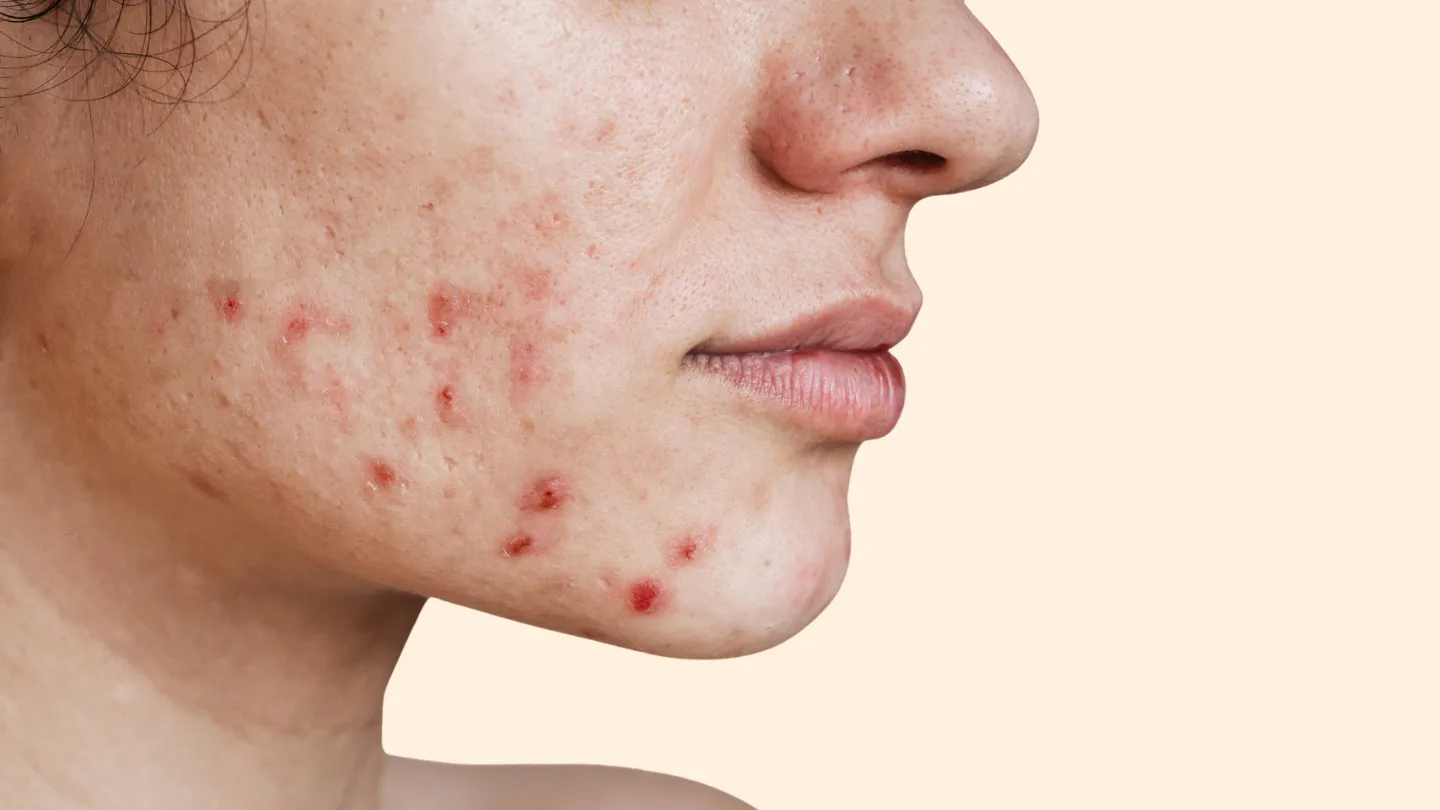Understanding the Causes Behind Problem Pimples
Dealing with acne breakouts is frustrating at any age. However, clearing up recurring stubborn pimples can feel especially challenging. While an occasional small zit now and then is par for the course, what leads to those painful and hard-to-resolve monster pimples?
Learning what causes major breakouts is key to creating targeted solutions for prevention and treatment when those jumbo blemishes rear their ugly heads.
Potential Triggers for Serious Acne Issues
Underlying contributors to problem pimples often include:
- Hormonal fluctuations
- Sebum overproduction
- Bacterial overgrowth
- Clogged pores and sebaceous filaments
- Stress
Identifying and addressing the specific triggers present can help eliminate recurring major breakouts. Let’s look closer at each factor and its influence.
How Hormones Impact Acne
Hormone imbalances and changes often drive excess sebum oil production in the skin. The androgens typically responsible include testosterone, DHEA-S, and dihydrotestosterone (DHT).
Excess androgen stimulation causes the sebaceous glands surrounding hair follicles to enlarge and create too much oil. This leads to clogged pores more prone to colonization by pimple-causing bacteria.
Additional Acne Agitators
While androgen hormones play a central role, other aspects can worsen breakouts too. These include:
- Genetics and family history
- Monthly menstrual cycles
- Birth control medications
- Stress
- Greasy hair products
- Skincare ingredients like cocoa butter or coconut oil
Tracking when breakouts happen and what environmental factors or products were used leading up can reveal individual acne triggers.
Tackling Blemishes Head On
Learning what causes acne is the critical first step toward creating an effective treatment plan. With the right acne skincare regimen guided by a dermatologist or esthetician, most cases of even severe, cystic acne can be controlled.
Professional Treatment Options
Depending on case specifics, customized professional acne treatment programs may incorporate:
- Prescription or over-the-counter acne medications
- Chemical peels
- Manual extractions
- Acne surgery/incision and drainage
- Photodynamic therapy
- Laser resurfacing treatments
In-office procedures help clear current blemishes while medical grade cleansers, creams and oral prescriptions address the root internal causes of problem pimples.
At-Home Prevention Strategies
An effective daily skincare regimen optimized for acne-prone skin can also make a significant difference. Key tips include:
- Washing with medicated cleansers containing benzoyl peroxide or salicylic acid
- Applying oil-free, non-comedogenic moisturizers and spot treatments
- Avoiding pore-clogging ingredients like oil, thick creams, and occlusives
- Being consistent!
Tracking changes with each new product introduced helps determine optimal formulations.
When to Seek Professional Help
Recurring major breakouts that resist improvement with over-the-counter washes and creams signal it’s time to consult a dermatologist. They can assess what’s causing problem pimples and create a tailored treatment plan.
Seeking medical care is especially prudent if large painful cysts are present or risk of scarring exists. Earlier intervention leads to better outcomes.
Understanding the underlying reasons behind big, stubborn pimples enables successfully clearing and preventing future major flare ups. Consistent gentle care also helps avoid picking and popping that can further aggravate breakouts.
FAQs
What causes those big, painful under the skin pimples?
Cystic blemishes and nodules form when excess sebum and dead skin cells get trapped deep in hair follicles. This breeds bacteria and leads to inflammatory lesions developing under the skin. Hormonal fluctuations are a common trigger.
Should I pop big pimples?
No, you should never pick or pop cystic acne. Doing so can further spread bacteria and cause scarring. See a dermatologist instead for sterile extraction or shots to reduce large blemishes.
How can I prevent deep painful breakouts?
Prescription acne medications like retinoids, antibiotics, and hormonal treatments help address the root internal causes of cystic pimples. Avoiding skin care ingredients that clog pores can help too.
What is the best acne spot treatment for big zits?
Look for over-the-counter spot treatments containing benzoyl peroxide or salicylic acid. For a fast-acting intensive option, try Clean & Clear Advantage Acne Spot Treatment. See a dermatologist for prescription strength alternatives as needed.
Disclaimer: This article is for informational purposes only and does not constitute medical advice. Always consult with a healthcare professional before starting any new treatment regimen.
Related Coverage
If breakouts persist, painful or scarring, it's time for an acne dermatologist who can diagnose, treat and prevent lasting marks....
Drugstore acne face masks with clay, charcoal, and exfoliants treat blackheads, inflammation, oiliness, cystic pimples. Use with lifestyle changes and acne skin care....
Learn whether ashwagandha can cause acne breakouts due to hormone changes or detox reactions. Discover other acne causes and science-backed treatments....
Pomade acne is a common struggle for many. Learn what causes pomade breakouts and get expert solutions to treat and prevent pimples from pomade residue buildup....
Sulfur offers remarkable benefits for acne, including oil absorption, antimicrobial properties, and exfoliation. Discover its advantages for clear skin....
Adult acne can be triggered by stress, hormones, diet, medications and improper skin care. Understanding the causes and using targeted treatments can clear up breakouts....
Retinoids, antibiotics, hormonal therapies and more - learn how the top prescription acne medications like Retin-A, Differin and Epiduo Forte help treat teenage breakouts....
Learn how to accurately and sensitively depict the physical, emotional, and psychological symptoms of depression in writing to increase awareness and understanding....
Discover the most effective acne body washes for treating and preventing pimples on your chest, back, and shoulders. Discusses ingredients that clear body acne....
Find effective ways to heal blood-filled pimples, including home remedies, OTC treatments, and preventative measures for clear skin....







